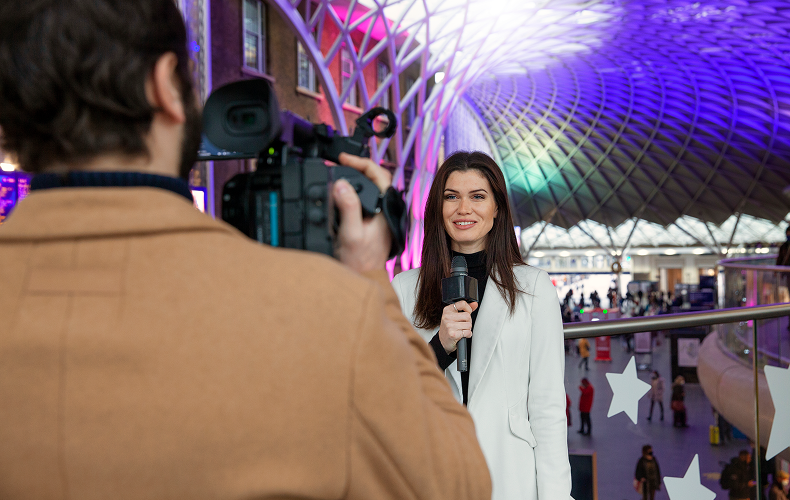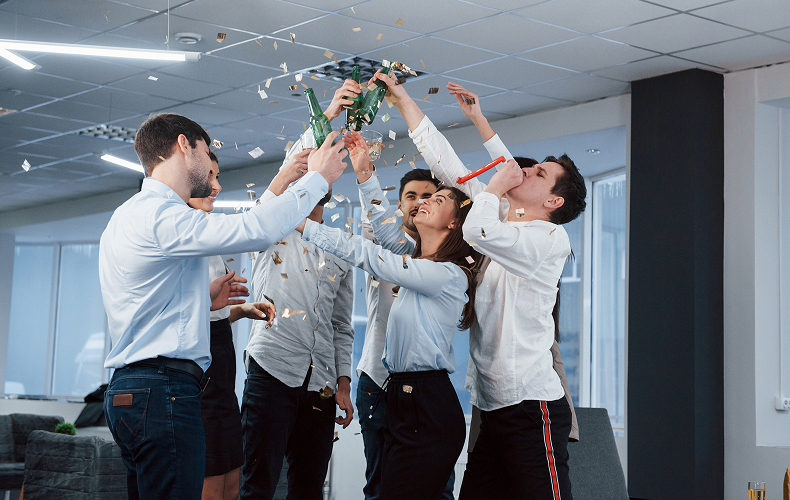Recent Posts

Event promotion in 2025 has never been more challenging—or more essential. With hundreds of events competing for attention in every corner of the internet, it’s easy to feel like you’re shouting into a void. But here’s the thing: the right promotion strategies can make your event unforgettable and create a buzz that’s impossible to ignore.
If you’ve been stuck posting generic updates or using outdated tactics that don’t seem to work anymore, you’re not alone. The landscape of event marketing has shifted drastically over the past few years, and those same tired tactics aren’t cutting it anymore.
In this blog, we’ll break down 7 proven event promotion strategies that will help you fill seats, drive ticket sales, and create memorable experiences for your audience. These strategies are tailored to 2025’s digital landscape, where personalization, creativity, and community are everything.
Let’s dive in.
1. Lead With Story, Not Just Information
In 2025, people aren’t looking for events—they’re looking for experiences. But the key to making them feel excited about attending is not just listing what’s happening, but telling a story.
Why It Works:
Storytelling creates an emotional connection with your audience, and emotions drive decisions. It’s easier for people to visualize themselves attending an event when they understand the underlying story or mission. Think about it: What would resonate more with you—an event agenda with speakers listed, or a story about how this event was designed to challenge conventional thinking or offer life-changing opportunities?
How To Apply It:
- Tell your event’s origin story: Why did this event come to life? What problem does it solve? Who’s behind it, and why do they care?
- Use personal testimonials and real stories: Share stories from past attendees about how your event impacted their lives.
- Create a visual journey: Develop a trailer or short video that highlights the emotions people will experience at the event. Don’t just show the schedule—show the feelings.
Case Study:
TED Talks is an excellent example of how powerful storytelling can drive event engagement. TED doesn’t just tell you what topics the speakers will discuss; they highlight the big ideas and transformative moments. The event becomes something people want to be part of, rather than just an educational seminar.
2. Master Social Media in 2025
Social media has always been a powerful tool for event promotion, but in 2025, the key to success is understanding the nuances of each platform and using them to engage your audience on a personal level.
Why It Works:
Social media algorithms have evolved, and now the goal is to spark authentic interaction. Platforms like Instagram, TikTok, and YouTube prioritize content that gets genuine engagement, which means you need to create shareable, relatable, and exciting posts.
How To Apply It:
- Prioritize video-first content: Platforms like Instagram and TikTok reward short-form video (think Reels, Stories, TikToks, and YouTube Shorts). Create engaging snippets of your event, such as behind-the-scenes looks, speaker highlights, and teaser clips.
- Use interactive features: Stories with polls, questions, and countdowns will increase engagement and help build excitement leading up to the event.
- Develop a branded hashtag: Create a unique hashtag for your event and encourage attendees to use it. This builds buzz and makes it easier for you to track event-related content.
- Leverage UGC (user-generated content): Encourage attendees to post their excitement before the event. Repost their content on your own channels to build social proof.
Case Study:
Coachella does an excellent job of using Instagram and TikTok to promote their festival. By reposting fan content, sharing exclusive behind-the-scenes footage, and using catchy, shareable hashtags, they turn attendees into event ambassadors, amplifying the event’s reach.
3. Collaborate With Micro-Influencers
In the past, big-name celebrities seemed like the ultimate way to promote an event. But micro-influencers, who have smaller yet highly engaged audiences, are now the golden ticket.
Why It Works:
Micro-influencers are often seen as more relatable and trustworthy. They have the ability to speak directly to niche audiences, creating a stronger connection than celebrity endorsements can.
How To Apply It:
- Identify relevant micro-influencers: Look for influencers whose followers align with your event’s audience. These could be local influencers, industry-specific influencers, or people with a shared interest in your event theme.
- Offer value in exchange: Instead of simply paying for posts, offer your influencers VIP access, free tickets, or exclusive content. They’ll be more likely to share their experience authentically.
- Leverage influencer-created content: Give influencers the freedom to create content in their style, whether it’s a TikTok, Instagram Story, or YouTube vlog. This makes it feel more organic and less like an ad.
Case Study:
The “Fyre Festival” fiasco was a great example of what happens when influencer marketing goes wrong. On the flip side, events like the Women’s March used local micro-influencers to spread their message across platforms, successfully driving engagement and encouraging participation.
4. Build a Killer Email Campaign That Doesn’t Feel Like Spam
Email marketing isn’t dead—but only if it’s done right.
Why It Works:
Unlike social media, which is crowded with posts and ads, email inboxes are still a personal space. People have subscribed to receive updates, so you’re already starting with permission to speak to them. However, the key is making the email feel personal and valuable, not like a generic sales pitch.
How To Apply It:
- Segment your email list: Group your audience by interest, previous attendance, or engagement level. This allows you to send more relevant emails.
- Use strong, engaging subject lines: Your subject line is the first thing recipients see—make it intriguing, emotional, and relevant.
- Provide exclusive content: Give your email subscribers a sneak peek or early access to tickets.
- Create a sequence of emails: A well-timed email sequence should include the announcement, a “behind-the-scenes” update, a reminder email, and an urgency email as the event date nears.
Case Study:
The Glow Conference uses email marketing to great effect. By sending segmented emails that offer tailored content and early bird specials, they build excitement and drive ticket sales long before the event begins.
5. Tap Into Niche Communities & Local Circles
While going viral on social media might be your dream, sometimes it’s the niche communities and local circles that offer the most engaged audience for your event.
Why It Works:
Smaller, specialized groups have more trust and loyalty in their communities. People within these groups are more likely to be excited about your event because it directly aligns with their interests.
How To Apply It:
- Engage in online communities: Participate in forums, Facebook groups, Reddit threads, and Slack communities related to your event’s niche. Share insights, offer value, and gradually introduce your event.
- Leverage local businesses and venues: Partner with local cafes, coworking spaces, gyms, or retail shops that align with your event’s audience. This can help you tap into a hyper-local, engaged crowd.
- Host meetups or pre-events: If possible, organize small local meetups or pre-event gatherings to build excitement and momentum.
Case Study:
The San Francisco Design Week thrives in local communities, partnering with local design shops, schools, and creative agencies to promote the event. By tapping into a passionate local community, they generate massive buzz with a relatively small marketing budget.
6. Offer Tiered Pricing, Flash Sales, and Giveaways
When you want people to take action now, pricing and urgency can be your best friends.
Why It Works:
People love a deal, and limited-time offers or exclusive deals can push them from thinking “Maybe” to clicking “Buy Now.” Flash sales and giveaways also create excitement, especially when you offer limited-edition experiences.
How To Apply It:
- Use tiered pricing: Offer different ticket levels—early bird, general admission, VIP—with increasing prices as the event date approaches. This creates urgency for early ticket purchases.
- Flash sales: Create time-sensitive discounts or special offers. For example, offer 10% off for the next 48 hours or for the first 100 tickets sold.
- Host giveaways: Run contests where people can win free tickets or exclusive VIP passes. To enter, they can share your event on social media or tag friends.
Case Study:
The Comic-Con International event often sells tickets in tiers, with early bird tickets at a discounted price, followed by full-price tickets. The scarcity and urgency drive massive ticket sales and generate excitement months in advance.
7. Promote the Experience, Not Just the Agenda
When people think about your event, they should imagine the experience they’ll have, not just the list of activities.
Why It Works:
People are more likely to attend if they can picture themselves there, surrounded by excitement, like-minded individuals, and unforgettable experiences.
How To Apply It:
- Create immersive content: Use immersive visuals, like videos or photos, to show what the event feels like. Highlight the unique activities, the energy in the room, and the connections people will make.
- Share testimonials: Showcase past attendee testimonials, speaker highlights, and experiences to build anticipation.
- Focus on emotions: Use emotional language in your promotions that conveys how attendees will feel.
Case Study:
The Burning Man Festival is a prime example. It’s not about the speakers or workshops—it’s about the sense of freedom, creativity, and community. The experience is marketed, not just the event itself.
Conclusion: The Road to Event Success in 2025
Event promotion in 2025 is all about connection, creativity, and community. If you’re still relying on outdated methods that no longer resonate with modern audiences, it’s time for a change.
By using the strategies in this blog, you’ll be able to craft an event that not only attracts attention but creates an unforgettable experience that people will rave about for years to come.
Stay consistent, think outside the box, and never underestimate the power of a great story. Your next event is just around the corner—and with these strategies in place, you’ll be ready to make it a massive success.

